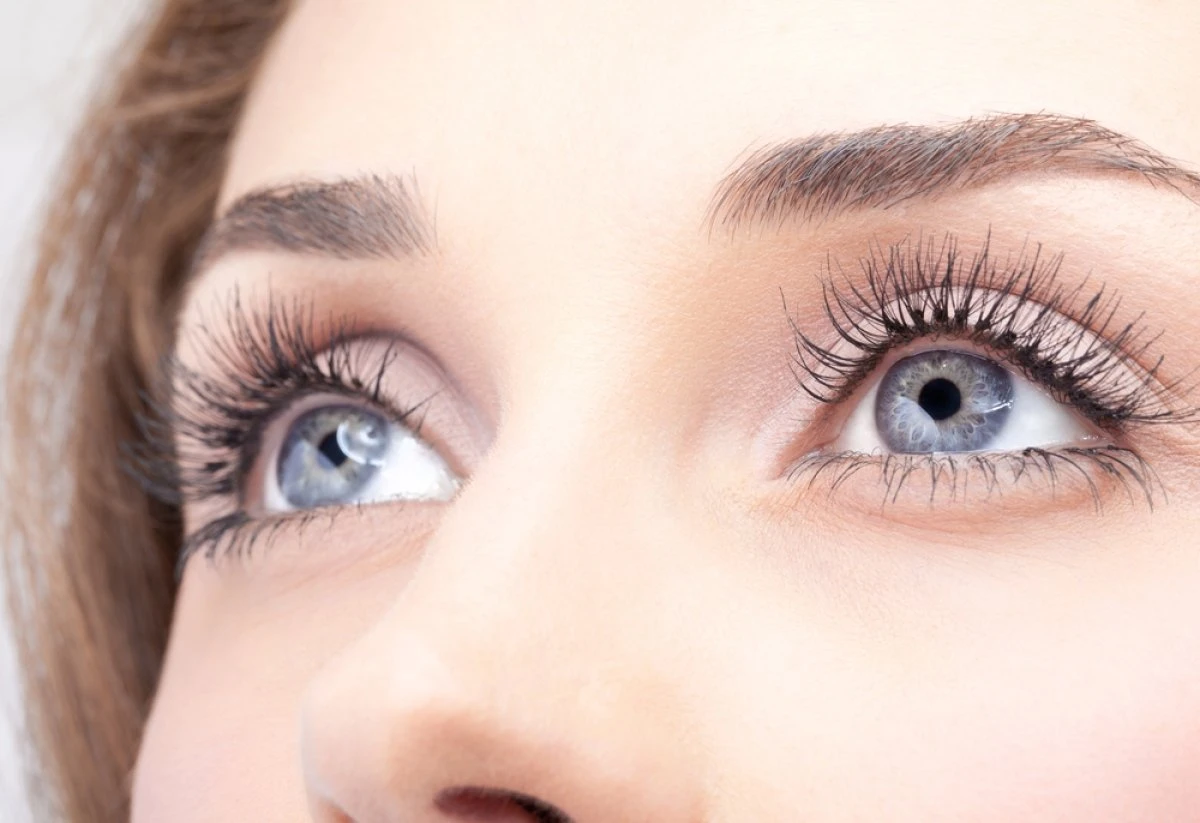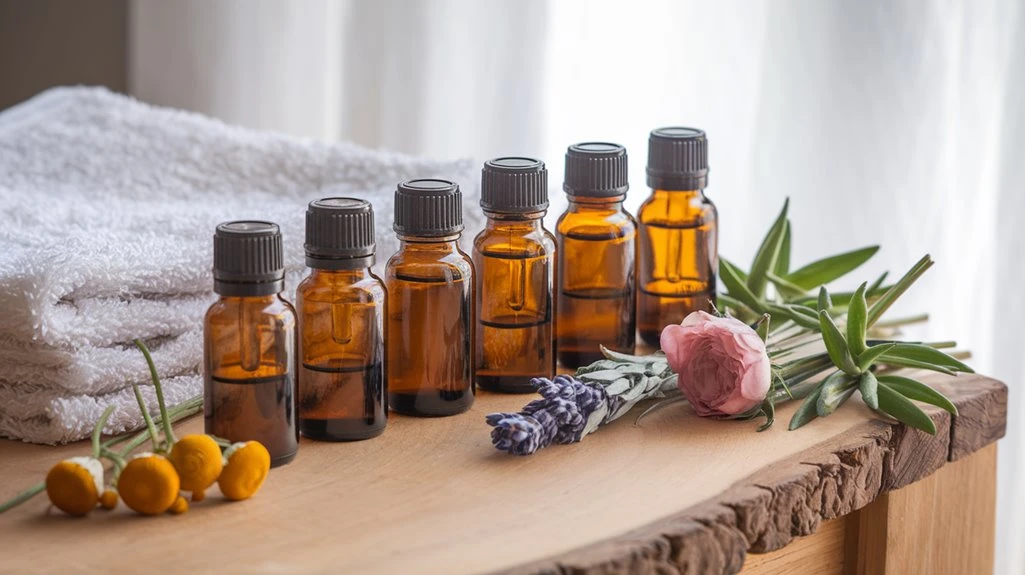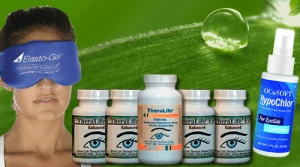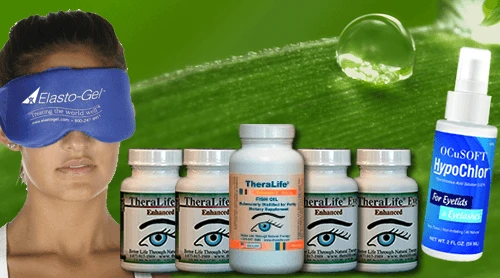For those considering essential oils for blepharitis relief, caution is advised due to limited clinical evidence regarding their safety and efficacy around the eyelids. While essential oils like tea tree, chamomile, lavender, calendula, frankincense, coconut, and castor are often recommended, they can cause allergic reactions or irritation. Standard treatments like lid hygiene and warm compresses remain crucial, and it’s essential to consult your eye care professional before trying any new topical approach.
TheraLife offers a range of products that provide significant benefits for individuals struggling with eye conditions like blepharitis. TheraLife’s products are designed to support natural healing and relief through comprehensive solutions. By focusing on overall eye health and addressing underlying causes, TheraLife helps customers achieve long-term relief from symptoms. Their product line, including natural supplements and treatments, is tailored to enhance eye function and alleviate discomfort. TheraLife’s commitment to scientifically-backed, holistic approaches ensures that their customers receive effective and safe eye care solutions. Always stay informed about which natural remedies might offer benefits and consult with professionals for personalized advice.
Best Blepharitis/MGD Treatment From TheraLife- When Drops Don’t Work.
Key Takeaways
- Most essential oils lack clinical evidence and are not considered safe or effective for direct blepharitis relief.
- Tea tree oil, lavender oil, and chamomile oil are commonly mentioned but may cause irritation or allergic reactions on sensitive eyelid skin.
- Proper dilution and extreme caution are required if considering any essential oil near the eyes due to risk of ocular harm.
- Evidence-based treatments like warm compresses and approved eyelid scrubs remain the safest and most effective options.
- Always consult an eye care professional before trying essential oils to prevent adverse reactions and ensure proper blepharitis management.
Tea Tree Oil for Soothing Eyelid Irritation
Although tea tree oil is commonly promoted for managing eyelid inflammation, current clinical evidence doesn’t support its use for soothing irritation in cases of blepharitis.
When evaluating eyelid hygiene strategies, it’s essential to rely on treatments that have demonstrated safety and efficacy.
While some products containing tea tree are marketed for improving eyelid hygiene, especially against Demodex mites, there’s insufficient evidence to recommend tea tree oil for direct relief of eyelid irritation.
In fact, improper use may increase the risk of allergic reactions, dermatitis, or further irritation.
You should consult an eye care professional before considering tea tree preparations.
Blepharitis is a chronic condition with periods of exacerbation and remission, and requires proper management to alleviate symptoms.
Evidence-based protocols for eyelid hygiene—such as warm compresses and prescribed cleansers—remain the primary recommendations for managing blepharitis-related discomfort and inflammation.
Chamomile Oil for Reducing Inflammation
You may consider chamomile oil, as studies suggest it offers natural anti-inflammatory effects and is generally gentle on eyelid skin. Clinical guidance advises careful use, particularly with proper dilution to minimize irritation. Additionally, it is important to maintain eyelid cleanliness regularly to reduce the risk of flare-ups and enhance the effectiveness of any treatment. Let’s review evidence-based application methods and precautions before incorporating chamomile oil into your blepharitis care regimen.
Natural Anti-Inflammatory Properties
While chamomile oil is often touted for its anti-inflammatory properties, clinical evidence doesn’t support its effectiveness in reducing inflammation associated with blepharitis. You may encounter chamomile oil recommended as a natural remedy for eyelid care, but current research doesn’t confirm its ability to address the underlying inflammatory processes of this condition. Although in vitro studies suggest potential benefits, there’s a lack of robust, peer-reviewed clinical trials showing that chamomile oil can reliably alleviate eyelid inflammation when used for blepharitis. Given these limitations, it’s important to exercise caution and avoid relying solely on chamomile oil or other natural remedies for managing eyelid inflammation. Instead, consult an ophthalmologist to determine appropriate evidence-based treatment options tailored to your specific condition and individual eyelid care needs. Regular eye check-ups are essential for monitoring eye health and receiving personalized advice.
Gentle on Eyelid Skin
Many popular sources claim chamomile oil is gentle on eyelid skin and effective for reducing inflammation in blepharitis. However, clinical evidence supporting chamomile oil’s safety and efficacy for eyelid hygiene is currently insufficient. Because the periocular area is highly sensitive, you should exercise caution with any essential oil application. Although chamomile is associated with anti-inflammatory outcomes in dermatology, its direct use on eyelid skin lacks robust clinical validation. Blepharitis is often a chronic condition that requires ongoing management to prevent persistent inflammation. Consider the following comparison:
| Consideration | Clinical Perspective |
|---|---|
| Skin Sensitivity | Eyelids are highly susceptible to irritation. |
| Essential Oil Safety | Chamomile oil may cause allergic reactions in some users. |
| Evidence Base | No large-scale, controlled studies confirm benefit for blepharitis. |
Always consult an ophthalmic professional before incorporating chamomile or any essential oil into your eyelid hygiene regimen to ascertain safety and minimize risk.
Application Methods Explained
Although online resources frequently outline methods for applying chamomile oil to the eyelids to reduce inflammation, current clinical guidance doesn’t support these practices for blepharitis management. Instead, ophthalmologists recommend maintaining strict eyelid hygiene—such as warm compresses and gentle lid scrubs with sterile products—to manage this condition. If you’re considering essential oils for symptom relief, be aware that chamomile oil’s direct application near the eyes carries potential risks, including irritation or allergic reactions. No robust clinical trials have established chamomile oil’s safety or efficacy for eyelid use. To prioritize essential oil safety, avoid self-directed applications and consult an eye care professional before using any essential oil products around the ocular area. Evidence supports traditional hygiene techniques over unproven topical essential oil methods for blepharitis care. Inflammatory cytokines, such as IL-1beta, TNF-alpha, and IL-8, play a significant role in the pathophysiology of blepharitis and dry eye disease, emphasizing the importance of targeted treatment strategies.
Best Blepharitis/MGD Treatment From TheraLife- When Drops Don’t Work.
Lavender Oil as a Gentle Antiseptic
You might consider lavender oil for its documented natural antimicrobial effects, which may help address blepharitis-associated microbes. Emerging evidence suggests it can soothe eyelid inflammation, but you should always dilute it properly to reduce the risk of ocular irritation. Regular eyelid hygiene is crucial in minimizing symptom recurrence and should be maintained alongside any natural treatments. Consult your healthcare provider before applying any essential oil near the eyes.
Natural Antimicrobial Properties
Claims about lavender oil’s gentle antiseptic or antimicrobial effects frequently appear in discussions of natural remedies for blepharitis.
However, current clinical evidence doesn’t support the antimicrobial efficacy of lavender oil when applied near the eyelids. While in vitro studies suggest some essential oils, including lavender, possess activity against certain pathogens, these findings don’t always translate to effective or safe use in sensitive areas like your eyes.
The ocular surface is particularly vulnerable, and essential oil safety is paramount to prevent irritation or allergic reactions. Without substantial, peer-reviewed research on patients with blepharitis, you shouldn’t assume lavender oil offers reliable microbial control for eyelid hygiene.
Consult your eye care professional before trying any essential oil, as conventional treatments remain the standard of care for blepharitis. Eyelid hygiene is crucial for managing blepharitis symptoms, supported by Mayo Clinic recommendations.
Soothing Eye Inflammation
Many individuals seek natural remedies like lavender oil for soothing eyelid inflammation associated with blepharitis, often attracted by its reputation as a gentle antiseptic. Clinical studies suggest lavender oil possesses mild anti-inflammatory and antimicrobial effects, which may support eyelid hygiene when used correctly. However, it’s vital to prioritize essential oil safety due to the delicate nature of periocular skin and conjunctiva. Always be mindful that undiluted essential oils can cause irritation or allergens. Consult your healthcare provider before integrating lavender oil into your routine. Consider the following factors:
| Factor | Clinical Benefit | Caution |
|---|---|---|
| Lavender’s Antiseptic | Reduces bacterial biofilm | Risk of irritation in sensitive skin |
| Anti-inflammatory Action | May ease swelling | Not a substitute for conventional treatments |
| Eyelid Hygiene Support | Aids debris removal | Patch test recommended before use |
| Essential Oil Safety | Potential adjunct therapy | Never apply directly into eyes |
Natural remedies like lavender oil can complement conventional treatment options by providing additional comfort and symptom relief.
Dilution for Safe Usage
Proper dilution remains essential when considering lavender oil as a gentle antiseptic for blepharitis management. Undiluted essential oils can cause ocular irritation and exacerbate inflammation, making safe mixtures a top priority.
Clinical guidelines suggest combining no more than 1-2 drops of lavender oil with one tablespoon of an ophthalmic-grade carrier, such as sterile coconut or jojoba oil. Always use sterile applicators and avoid direct eye contact.
While home remedies offer symptom relief, their effectiveness may be limited compared to specialized treatments like Theralife products.
To guarantee safety and efficacy when using lavender oil, follow these principles:
- Never apply pure essential oils near the eyelids or ocular surface.
- Store all mixtures in tightly sealed, amber containers away from heat and light for proper storage.
- Consult an ophthalmologist before initiating any essential oil regimen for blepharitis.
Prioritize evidence-based care and avoid risky self-treatment.
Calendula Oil for Calming Sensitive Skin
While proponents often highlight calendula benefits such as anti-inflammatory and soothing properties for sensitive skin, robust scientific data on its efficacy and safety for periocular use, especially in blepharitis, remains lacking. You should exercise caution if considering calendula oil around your eyes, as the skin in this area is particularly vulnerable and sensitive. Inappropriate use could potentially exacerbate irritation or trigger allergic reactions. If you’re seeking relief for blepharitis symptoms, consult with your ophthalmologist or dermatologist before introducing any essential oils, including those with purported calendula benefits. Evidence-based interventions—such as lid hygiene and prescribed treatments—currently remain the standard of care for managing blepharitis-related sensitive skin.
Frankincense Oil for Promoting Healing
Although frankincense oil is often cited in alternative medicine circles for its supposed healing properties, current scientific evidence doesn’t support its use for promoting healing in blepharitis.
You may encounter claims about frankincense benefits, such as its anti-inflammatory or antimicrobial effects, but these haven’t been validated in rigorous clinical studies, particularly for eyelid inflammation.
Using essential oils near your eyes can pose significant risks, including irritation and allergic reactions.
Consider these clinical points before using frankincense oil for blepharitis:
- Scientific literature doesn’t support frankincense’s healing properties for blepharitis.
- Topical application near the eyes increases the risk of adverse reactions.
- No professional ophthalmic guidelines recommend frankincense for eyelid disorders.
It’s safest to consult your eye care professional before trying any essential oils for blepharitis.
Coconut Oil for Moisturizing the Eyelids
Many people consider using coconut oil to moisturize the eyelids or soothe symptoms of blepharitis, but current research doesn’t support its safety or efficacy for this purpose.
While coconut benefits are frequently highlighted in skincare, the clinical data for eyelid care remain insufficient. You might hear anecdotal claims about coconut oil’s antibacterial or moisturizing properties, but these haven’t been substantiated in peer-reviewed studies specific to blepharitis or the sensitive periocular region.
Applying oils not formulated for ophthalmic use can carry risks, such as allergic contact dermatitis or exacerbation of inflammation. Consequently, ophthalmologists don’t recommend topical coconut oil for eyelid care, especially in cases of blepharitis.
For safe management, it’s best to rely on treatments backed by clinical evidence and consult your eye care provider before trying new remedies.
Castor Oil for Anti-inflammatory Benefits
Despite popular claims online, current evidence doesn’t support the use of castor oil for its anti-inflammatory benefits in managing blepharitis.
While castor oil is frequently recommended for eyelid care, clinical studies have yet to demonstrate its effectiveness or safety in treating the inflammation associated with blepharitis.
If you’re searching for relief, you should remain cautious about incorporating castor oil into your regimen, as unproven remedies can delay appropriate treatment.
Here are three important points to evaluate:
- Studies on castor oil for blepharitis are lacking; efficacy and safety remain unproven.
- Applying oils near the eyes may increase the risk of irritation or allergic reactions.
- Consult your eye care professional before introducing castor oil or any topical agents into your eyelid care routine.
Prioritize evidence-based strategies for reliable results.
Best Blepharitis/MGD Treatment From TheraLife- When Drops Don’t Work.
Frequently Asked Questions
Can Essential Oils Interact With Prescription Medications for Blepharitis?
You should always consider essential oil interactions when using them alongside prescription medications, as they can affect medication safety.
Some essential oils may alter drug metabolism, especially those processed by liver enzymes like CYP450. This interaction could reduce the effectiveness of your medications or increase side effects.
Always consult your ophthalmologist or healthcare provider before combining essential oils with prescribed treatments to guarantee safe and effective management of your blepharitis.
Are Essential Oils Safe for Use in Children With Blepharitis?
When it comes to children safety, you simply can’t be too cautious—essential oils may seem miraculous, but their risks are often underestimated.
Children’s skin and eyes are remarkably sensitive, making essential oils potentially irritating, or even harmful, for pediatric blepharitis treatment.
Clinical studies advise against direct application near the eyes.
Consult your healthcare provider before considering any essential oil use for blepharitis in children, prioritizing evidence-based, low-risk interventions.
How Frequently Should Essential Oils Be Applied for Best Results?
When considering application frequency, you should prioritize safety and evidence-based practice.
Clinical studies on essential oils recommend minimal use—typically once daily—to assess skin tolerance and minimize adverse reactions.
For best results, apply the diluted oil with a sterile cotton swab, monitoring for irritation or allergic responses.
If symptoms persist or worsen, discontinue use and consult a healthcare professional.
Always follow caution, as excessive application increases the risk of ocular or periocular complications.
What Are Signs of an Allergic Reaction to Essential Oils Near the Eyes?
When you use essential oils near your eyes, watch for allergic symptoms like redness, swelling, itching, or a burning sensation—these indicate eye irritation.
You might also notice watery eyes, eyelid dermatitis, or blurred vision. If any of these signs develop, discontinue use immediately and consult a healthcare professional.
Evidence shows allergic reactions around the eyes can escalate quickly, so it’s imperative you act cautiously and monitor for any adverse changes.
Can Essential Oils Be Used Along With Warm Compresses for Blepharitis?
Imagine you try essential oil blends with warm compress techniques, hoping to soothe your blepharitis.
Clinical studies haven’t confirmed that combining essential oils with warm compresses improves outcomes, so you should use caution.
Warm compresses alone remain the gold standard for managing symptoms.
If you’re considering adding essential oil blends, always consult your ophthalmologist first, as improper use can cause irritation, allergic reactions, or worsen your eye condition.
Patient safety must come first.
Best Blepharitis/MGD Treatment From TheraLife- When Drops Don’t Work.
Conclusion
Living with blepharitis can be challenging—up to 47% of ophthalmology patients experience its symptoms. TheraLife offers a range of products designed to support eye health and provide relief from conditions like blepharitis. Their natural solutions, such as essential oils, are crafted to complement prescribed therapies, aiding in reducing irritation and fostering healing. TheraLife emphasizes the importance of proper dilution and consulting with an ophthalmologist before use. By prioritizing ocular safety and evidence-based practices, TheraLife helps optimize eye health and comfort for its customers. Your vigilance in using these products can help manage symptoms effectively.





